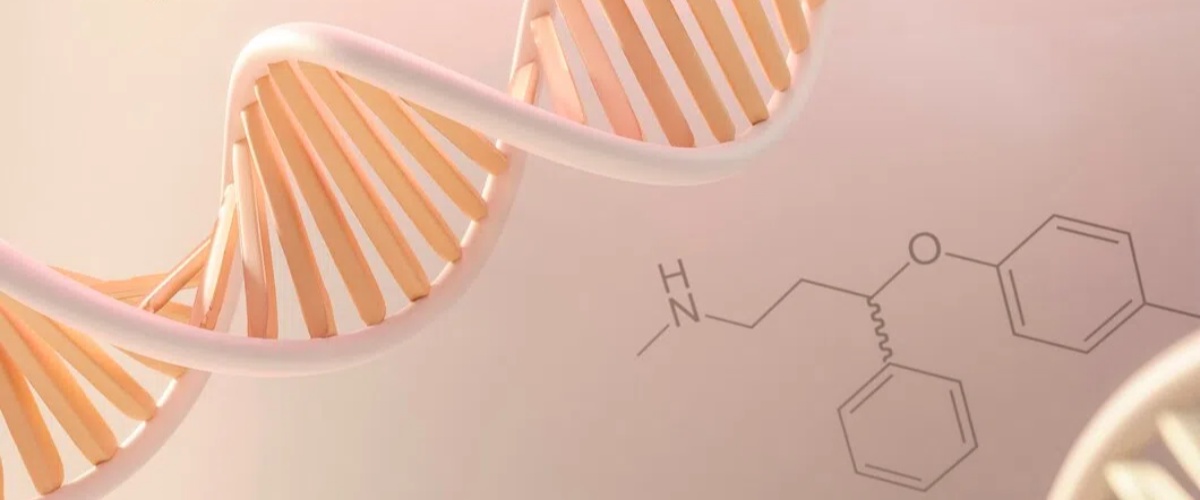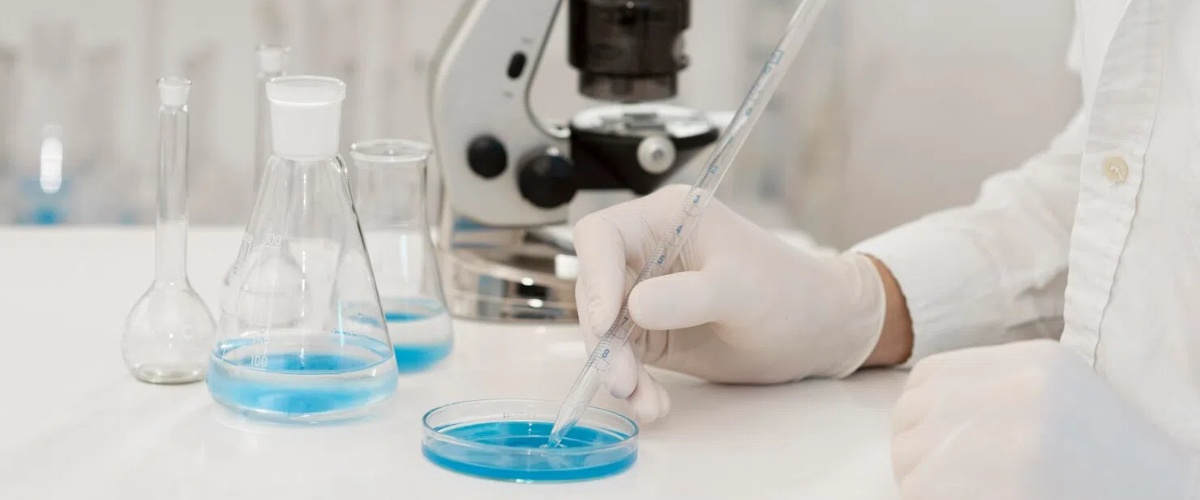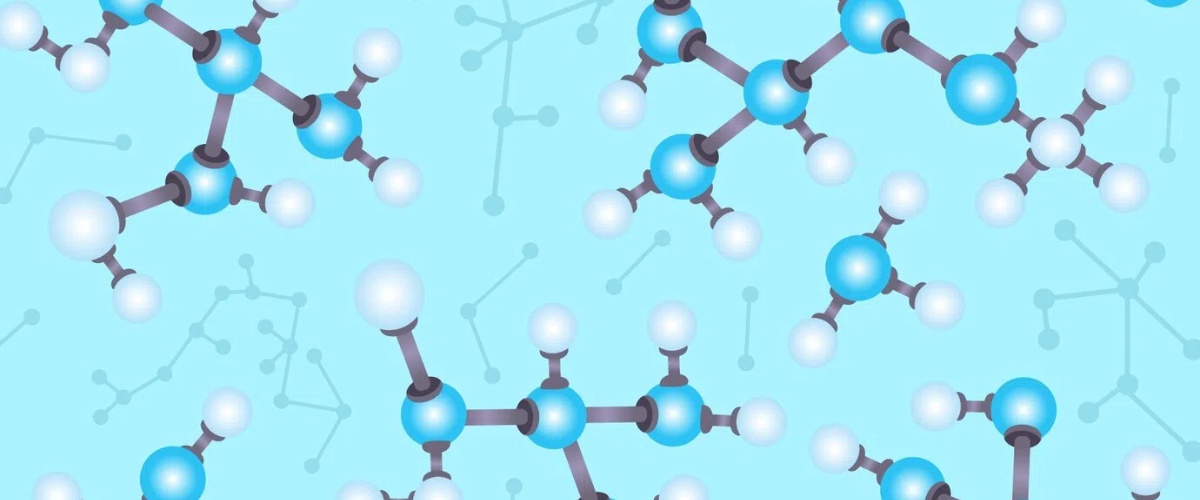Spermine tetrahydrochloride is a compound that has received attention for its potential health benefits. Here are the key facts you need to know about this interesting substance Spermine is a polyamine compound found in all living cells, including human cells. It plays a vital role in various cellular processes, such as DNA stability and cell growth. Spermine tetrahydrochloride is a synthetic form of spermine that has a range of potential health benefits, from its antioxidant properties to possible neuroprotective effects. As research on this compound continues, it may provide new opportunities to develop new treatments and treatments for a variety of health conditions.
Spermine tetrahydrochloride is a polyamine compound and a synthetic form of spermine that has been the subject of extensive research due to its diverse biological activities. Spermine is a naturally occurring polyamine that is present in all eukaryotes but is rare in prokaryotes. It is essential for cell growth in both normal and tumor tissue. Spermine is formed by the addition of an aminopropyl group to spermidine by spermine synthase. Spermine is highly alkaline. In an aqueous solution with physiological pH value, all its amino groups will be positively charged. Spermine is often used in molecular biology and biochemistry research. The same spermine tetrahydrochloride is also mostly used in molecular biology. academic research.
One of the key mechanisms of action of spermine tetrahydrochloride is its ability to regulate cell proliferation and differentiation. Polyamines, including spermine, are essential for cell growth and division and play a crucial role in regulating gene expression and protein synthesis. Spermine tetrahydrochloride has been shown to promote proliferation of certain cell types, making it a valuable tool for studying cell growth and development.
In addition, spermine tetrahydrochloride is involved in the regulation of stem cell differentiation. Research shows that spermine tetrahydrochloride can influence the fate of stem cells, guiding them toward specific lineages and promoting their maturation into specialized cell types. This property holds great promise for regenerative medicine and tissue engineering, where the ability to control stem cell differentiation is crucial.
In addition to its role in cell proliferation and differentiation, spermine tetrahydrochloride has attracted attention for its potential neuroprotective effects. Research shows that spermine tetrahydrochloride can protect neurons from various forms of damage and promote their survival. This has implications for neurodegenerative diseases and nerve damage.

Spermine tetrahydrochloride is used to precipitate DNA from low-saline aqueous buffers. In the nervous system, it exhibits neuroprotective effects at high concentrations and neurotoxicity at lower concentrations. Spermine itself can also act as a regulator of gene expression and an inhibitor of cell and DNA damage by scavenging free radicals.
Biological research
Spermine tetrahydrochloride is widely used in biological research due to its ability to interact with nucleic acids and proteins. It is known to stabilize DNA and RNA structures, making it a valuable tool in molecular biology research. Researchers frequently use spermine tetrahydrochloride to study interactions between nucleic acids and proteins, as well as to study the role of polyamines in cellular processes.
Additionally, spermine tetrahydrochloride has been used in the development of gene delivery systems. Its ability to concentrate and protect DNA makes it a promising candidate for gene therapy and drug delivery applications. By incorporating spermine tetrahydrochloride into the delivery system, researchers aim to increase the efficiency and specificity of gene transfer, opening up new possibilities for treating genetic and other diseases.
Therapeutic potential
The therapeutic potential of spermine tetrahydrochloride has also attracted interest from the medical and pharmaceutical industries. Research shows that spermine tetrahydrochloride has antioxidant and anti-inflammatory properties, which may make it a valuable candidate for new drug development.
One area of research that is attracting attention is the potential use of spermine tetrahydrochloride in cancer treatment. Research shows that spermine tetrahydrochloride may have the effect of inhibiting tumor growth and metastasis, making it a promising target for cancer treatment. Additionally, its ability to modulate immune responses and reduce oxidative stress has sparked interest in its potential use in treating other inflammatory and autoimmune diseases.
Industrial applications
In addition to its biological and therapeutic uses, spermine tetrahydrochloride has found applications in a variety of industrial processes. Its ability to act as a chelating agent and its anti-corrosion properties make it a valuable additive in the production of coatings, paints and metal treatments. Spermine tetrahydrochloride has been used to improve the durability and performance of materials, helping to develop more resilient and long-lasting products.

1.Spermine tetrahydrochloride and cell culture
Spermine tetrahydrochloride is a polyamine compound that plays a vital role in cell growth, proliferation, and differentiation. It occurs naturally in cells and is found to be involved in a variety of cellular processes, including DNA stability, gene expression, and protein synthesis. In cell culture, the addition of spermine tetrahydrochloride to the growth medium can have a significant effect on the behavior of cultured cells.
One of the key roles of spermine tetrahydrochloride in cell culture is its ability to stabilize DNA. DNA is the genetic material that carries instructions for cell function and development. By stabilizing DNA, spermine tetrahydrochloride can help maintain the integrity of genetic material within cultured cells, ensuring correct replication and transcription processes. This ultimately improves cell viability and health in culture systems.
Additionally, spermine tetrahydrochloride has been shown to affect gene expression in cultured cells. It can regulate the activity of certain genes, causing changes in the production of specific proteins and signaling molecules. This can have profound effects on the behavior of cells, potentially affecting their growth rate, differentiation potential and response to external stimuli. Therefore, the addition of spermine tetrahydrochloride to cell culture media can become a powerful tool for researchers to manipulate cell behavior in a controlled manner.
In addition to its effects on DNA stability and gene expression, tetrasalt spermine is also involved in the regulation of cell cycle progression. The cell cycle is the series of events that cells undergo as they grow and divide. Spermine tetrahydrochloride has been shown to affect cell cycle progression, possibly affecting the rate of cell division and the balance between cell proliferation and cell death. This makes it a valuable tool for researchers studying cell growth and development in a controlled environment.
It is worth noting that although spermine tetrahydrochloride has significant effects on cell culture, its use must be carefully controlled and optimized. The concentration of spermine tetrahydrochloride in the growth medium and the specific cell type being cultured can greatly influence its effects on cell behavior. Additionally, potential interactions with other compounds and chemicals in the culture system must be considered to ensure reliability and reproducibility of experimental results.
2.Enhances DNA Stability in Lab Experiments
In laboratory experiments, spermine tetrahydrochloride has shown promising results in enhancing DNA stability. This compound was found to interact with DNA molecules, forming complexes that increase resistance to factors that can cause DNA damage. Understanding the effects of spermine tetrahydrochloride on DNA stability is not only important for basic scientific research but also has potential implications for various fields including medicine and biotechnology.
The interaction between spermine tetrahydrochloride and DNA has been studied using a variety of techniques, including spectroscopic analysis and molecular modeling. These studies provide valuable insights into the mechanism by which spermine tetrahydrochloride enhances DNA stability. One proposed mechanism is that spermine tetrahydrochloride neutralizes the negative charge on the DNA molecule, thereby reducing the susceptibility of DNA to damage by reactive oxygen species and other harmful substances.
In addition, spermine tetrahydrochloride has been found to promote the formation of higher-order DNA structures, such as G-quadruplexes, which are known to play a role in regulating gene expression and maintaining genome stability. By stabilizing these structures, spermine tetrahydrochloride may contribute to the overall stability of the DNA molecule and its ability to perform essential cellular functions.
The implications of these findings extend beyond the realm of basic research. Spermine tetrahydrochloride has the ability to enhance DNA stability and has potential applications in various fields. For example, in medicine, understanding the role of spermine tetrahydrochloride in DNA stability may lead to the development of new therapeutic strategies for diseases associated with DNA damage, such as cancer and aging-related diseases. By targeting the mechanism by which spermine tetrahydrochloride interacts with DNA, researchers may discover new ways to protect and repair damaged genetic material.
In biotechnology, the use of spermine tetrahydrochloride to enhance DNA stability may have implications for the development of new technologies for gene editing and gene therapy. By improving the stability of DNA molecules, spermine tetrahydrochloride may help improve the efficiency and precision of gene editing tools, ultimately advancing the field of genetic engineering.
It is worth mentioning that although spermine tetrahydrochloride has promising potential in enhancing DNA stability, further research is needed to fully understand its mechanism of action and potential applications. Furthermore, the safety and efficacy of spermine tetrahydrochloride for use in clinical and biotechnological settings require thorough investigation.
3.Spermine tetrahydrochloride and molecular biology
Spermine tetrahydrochloride is a naturally occurring polyamine involved in a variety of cellular functions, including gene expression, DNA stability, and cell proliferation. Its ability to interact with nucleic acids and proteins makes it a key player in regulating important cellular processes.
One of the key areas of interest in molecular biology is the role of spermine tetrahydrochloride in gene expression. Research shows that spermine tetrahydrochloride can regulate the structure of chromatin, the complex of DNA and proteins that forms chromosomes in the nucleus. By interacting with histones (proteins that package DNA into chromatin), spermine tetrahydrochloride can affect the accessibility of genes for transcription and thus gene expression. This modulation of gene expression makes spermine tetrahydrochloride a key player in the complex network of molecular processes that control cellular function.
Additionally, spermine tetrahydrochloride has been found to play a role in DNA stabilization. Its ability to interact with DNA molecules and promote their stability has implications for a variety of cellular processes, including DNA replication and repair. By binding to DNA, spermine tetrahydrochloride can affect the structural integrity of genetic material, thereby affecting the overall stability and function of the genome. This aspect of its function highlights the importance of spermine tetrahydrochloride in maintaining the integrity of genetic material within cells.
In addition to its role in gene expression and DNA stability, spermine tetrahydrochloride has been implicated in cell proliferation. As a regulator of cell growth and division, spermine tetrahydrochloride plays a vital role in maintaining cellular homeostasis. Its ability to modulate the activity of various proteins involved in cell cycle progression emphasizes its importance in the regulation of cell proliferation.
The multifaceted role of spermine tetrahydrochloride in molecular biology emphasizes its importance as a key player in cellular processes. Its interactions with nucleic acids and proteins, as well as its regulatory effects on gene expression, DNA stability, and cell proliferation, make it a compound of interest to researchers seeking to unravel the complexities of molecular biology.
4.the Uses of Spermine Tetrahydrochloride in Modern Medicine
Related studies have shown that spermine tetrahydrochloride has anti-proliferative effects, making it a potential candidate for cancer. Its ability to inhibit cell growth and induce apoptosis in cancer cells has sparked interest in its use as a targeted therapy for various cancers.
Spermine tetrahydrochloride also shows promise in the field of neurodegenerative diseases. Research suggests the compound may have neuroprotective properties, making it a potential candidate for treating diseases such as Alzheimer's and Parkinson's disease. By targeting the underlying mechanisms of neurodegeneration, spermine tetrahydrochloride has the potential to slow disease progression and preserve cognitive function in affected individuals.
Additionally, spermine tetrahydrochloride has been explored for its potential role in cardiovascular health. Research suggests that this compound may have vasodilatory effects, which may be beneficial in conditions such as hypertension and cardiovascular disease. By promoting vasodilation and improving blood flow, spermine tetrahydrochloride may provide new ways to control cardiovascular disease and reduce the risk of related complications.
In addition to direct therapeutic applications, spermine tetrahydrochloride has been studied for its potential as a drug delivery vehicle. Its unique chemical properties make it an attractive candidate for encapsulating therapeutic agents and delivering them to specific target sites in the body. This has the potential to improve the efficacy and safety of a variety of drugs, opening up new possibilities for personalized and targeted drug delivery strategies.
As research into the uses of spermine tetrahydrochloride continues to develop, it is clear that this compound holds significant promise for the future of modern medicine. Its potential applications range from cancer treatment to neuroprotection, highlighting the compound's versatility and potential impact in solving some of the most pressing medical challenges of our time. As our understanding of spermine tetrahydrochloride's mechanism of action and potential therapeutic effects continues to advance, spermine tetrahydrochloride is expected to make meaningful contributions to the advancement of medical science and improvements in patient care.
Quality and Purity
The first and most important factor to consider when choosing a Spermine Tetrahydrochloride manufacturer is the quality and purity of the product. High-quality spermine tetrahydrochloride is critical to obtaining accurate and reliable research results. Look for manufacturers that adhere to strict quality control standards and have a reputation for producing pure, consistent products. It is also important to understand the manufacturing process and source of raw materials to ensure the highest purity.
Certification and Compliance
Another important aspect to consider is the manufacturer’s certification and compliance with industry standards. Look for manufacturers with relevant certifications such as ISO, GMP or other quality management certifications. These certifications demonstrate that manufacturers follow strict guidelines and procedures to ensure the quality and safety of their products. Additionally, ensure that manufacturers comply with relevant regulatory requirements and guidelines for the production and distribution of spermine tetrahydrochloride.
Reliability and reputation
It is crucial to choose a manufacturer with a good reputation and record of reliability. Look for manufacturers with positive reviews and recommendations from other customers, especially those in the scientific research community. A reliable manufacturer will have a history of delivering products on time and providing excellent customer service. Additionally, consider the manufacturer's experience in producing Spermine Tetrahydrochloride and their expertise in chemical manufacturing.
Customization and support
Depending on your specific research or industrial needs, you may require custom formulations or manufacturer support. Find manufacturers that offer Spermine Tetrahydrochloride custom options to meet your specific requirements. Additionally, consider the level of technical support and expertise provided by the manufacturer. Manufacturers who provide technical assistance, troubleshooting, and guidance are invaluable in ensuring successful use of spermine tetrahydrochloride in your application.
Cost vs value
While cost shouldn't be the only deciding factor, it's important to consider the overall value offered by the manufacturer. Compare prices for Spermine Tetrahydrochloride from different manufacturers, taking into account quality, reliability and support provided. Keep in mind that the cheapest option may not always be the best when it comes to quality and reliability. Consider the long-term benefits of working with a reputable manufacturer, even if it means paying a slightly higher price for a quality product.
Suzhou Myland Pharm & Nutrition Inc. has been engaged in the nutritional supplement business since 1992. It is the first company in China to develop and commercialize grape seed extract.
With 30 years of experience and driven by high technology and a highly optimized R&D strategy, the company has developed a range of competitive products and become an innovative life science supplement, custom synthesis and manufacturing services company.
In addition, Suzhou Myland Pharm & Nutrition Inc. is also an FDA-registered manufacturer. The company's R&D resources, production facilities, and analytical instruments are modern and multifunctional and can produce chemicals from milligrams to tons in scale, and comply with ISO 9001 standards and production specifications GMP.
Q: What is Spermine Tetrahydrochloride?
A: Spermine Tetrahydrochloride is a chemical compound that is derived from spermine, a polyamine compound found in living organisms. It is commonly used in research and laboratory settings for its various biological and biochemical properties.
Q: What are the uses of Spermine Tetrahydrochloride?
A: Spermine Tetrahydrochloride is used in a wide range of applications, including cell culture, molecular biology, and biochemistry. It is often used as a stabilizing agent for nucleic acids and proteins, as well as a co-factor for various enzymes.
Q: How is Spermine Tetrahydrochloride synthesized?
A: Spermine Tetrahydrochloride is typically synthesized through chemical reactions involving spermine and hydrochloric acid. The resulting compound is then purified and used in various research and experimental procedures.
Q:What are the potential benefits of using Spermine Tetrahydrochloride?
A: The use of Spermine Tetrahydrochloride in research and laboratory settings can provide valuable insights into cellular processes, gene expression, and protein function.
Q: Are there any safety considerations when working with Spermine Tetrahydrochloride?
A: As with any chemical compound, proper safety precautions should be taken when handling Spermine Tetrahydrochloride. This includes wearing appropriate protective gear, working in a well-ventilated area, and following established protocols for handling and disposal. It is important to consult the material safety data sheet (MSDS) for specific guidelines on safe handling and storage.
Disclaimer: This article is for general information only and should not be construed as any medical advice. Some of the blog post information comes from the Internet and is not professional. This website is only responsible for sorting, formatting and editing articles. The purpose of conveying more information does not mean that you agree with its views or confirm the authenticity of its content. Always consult a health care professional before using any supplements or making changes to your health care regimen.
Post time: Jul-19-2024






